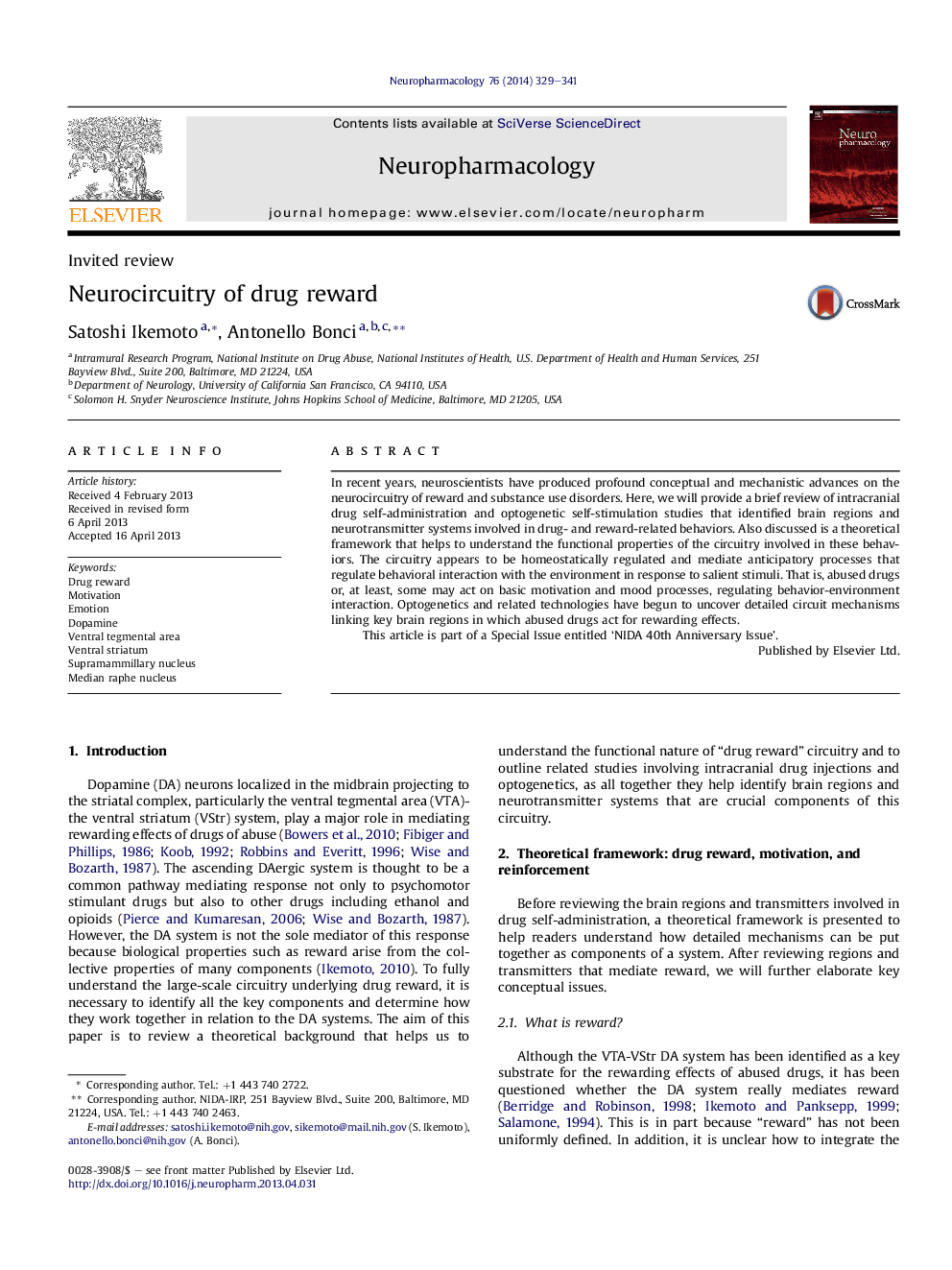| Article ID | Journal | Published Year | Pages | File Type |
|---|---|---|---|---|
| 2493280 | Neuropharmacology | 2014 | 13 Pages |
•Drug reward circuitry is organized extensively throughout the brain.•The circuitry integrates exteroceptive and proprioceptive information.•The circuitry mediates approach-related responses.•The circuitry is homeostatically regulated.
In recent years, neuroscientists have produced profound conceptual and mechanistic advances on the neurocircuitry of reward and substance use disorders. Here, we will provide a brief review of intracranial drug self-administration and optogenetic self-stimulation studies that identified brain regions and neurotransmitter systems involved in drug- and reward-related behaviors. Also discussed is a theoretical framework that helps to understand the functional properties of the circuitry involved in these behaviors. The circuitry appears to be homeostatically regulated and mediate anticipatory processes that regulate behavioral interaction with the environment in response to salient stimuli. That is, abused drugs or, at least, some may act on basic motivation and mood processes, regulating behavior-environment interaction. Optogenetics and related technologies have begun to uncover detailed circuit mechanisms linking key brain regions in which abused drugs act for rewarding effects.This article is part of a Special Issue entitled ‘NIDA 40th Anniversary Issue’.
